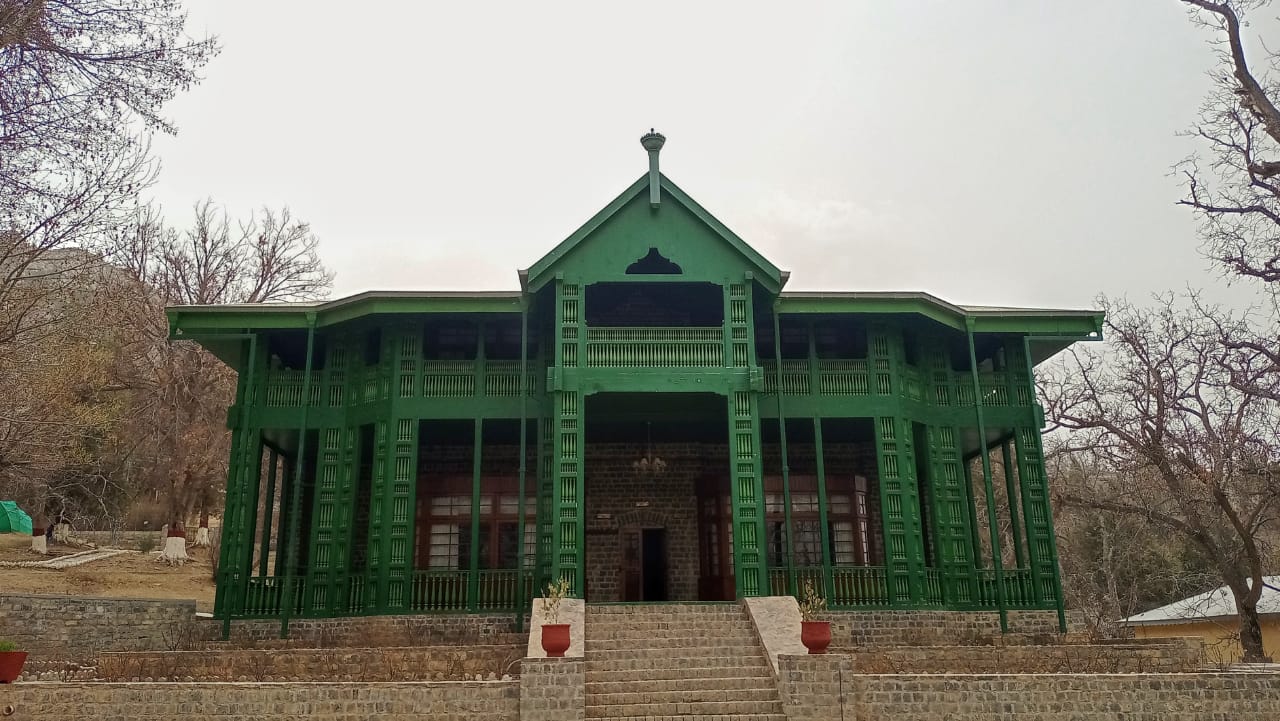KARACHI: “In Pashto, the word ‘Ziarat’ means the tomb of a saint. This place is called Ziarat because of Baba Kharwari, whose tomb is located in the valley behind the Quaid-e-Azam residency,” said Najeeb, a native of the scenic town, who was also serving as our driver-cum-guide.
Soon the car pulled up before an enclosure containing the mazar of the sufi saint – whose real name was Mullah Tahir, according to an Urdu inscription outside the building. It was the middle of March – the beginning of spring – and yet it was pleasantly cold in Ziarat.
“Now tourists come to the valley all-round the year but before the supply of gas to the area– I mean before 2002 – even the natives moved to Loralai or Sibbi by November 15 and returned only after April 15 to escape the harsh winters,” he added.
Najeeb’s words took me back to March 1993, when I had first seen Ziarat. The valley looked breathtakingly beautiful with its orchards exploding with pink and white flowers. The little town was, however, giving the feel of a ghost town.
“It is not like that anymore. The hotels remain open even during snowfall and thousands of tourists visit the place even in winter,” the guide reassured us. However, there was no one inside the rather cold enclosure of the mazar. The adjoining mosque was also empty.
This was our second day at Ziarat. We had taken a room at a rest house located along the central street of the town. It was not an ideal room but the lawn outside it was simply delightful. The rest house sat between two orchards of cherry and peach trees.
Like most people of Ziarat, the owner of the rest house, Gulraz, was kind and hospitable. “People of Karachi hold a special place in our hearts,” he said in a voice full of sincerity.
Just a few yards away from our quarters a road wound up into the hills towards the residency and we wanted to visit the place without delay. “Will you be able to walk to that place? It is quite a long distance and the road is steep,” he asked, incredulously.
Gulraz was not wrong as when we reached the beautiful garden surrounding the colonial era architecture we were out of breath. But like always, we were also struck by the beauty of the scene.
“The residency was almost completely destroyed by terrorists in 2013 but it was rebuilt using exactly the same material and nobody can tell the difference,” said the bearded caretaker of the building, who first asked us to remove our shoes before entering the wooden building.
Once outside, we sat beneath the huge Chinar tree near the main entrance of the residency. Now we were to walk further up to Green Juniper, a small restaurant with a beautiful view. Despite Najeeb’s claims, the restaurant was still closed for the winter.
However, from that restaurant one could go up on the stone battlement which offered a great panoramic view of the valley. Walking down the curved parapet, we could hear the mellow sound of water which ran beneath the walkway.
The next day, Najeeb was to take us to Domera, a jungle of olive trees through which a stream runs. The road to this resort was not in a great shape and was positively dangerous at some points. However, Domera was indeed a place worth seeing.
“This place is at a lower altitude and here the topography of Ziarat changes with olives trees replacing traditional juniper trees,” the guide told the tourists. And indeed the place was much warmer compared to Ziarat-proper although the water of the stream was still pretty cold.
There were not many tourists at this large resort at that particular point in time. However, unscrupulous visitors had left their traces at a number of places in the shape of plastic bottles, wrappers and bags. If authorities and people paid more attention, we could get rid of this aesthetic eyesore, I thought.
The next destination was Zarzari, a beautiful resort in the middle of a juniper forest. On our way back, we decided to take lunch at a restaurant in a rather upscale hotel. When we were walking back to the gate of the hotel, an attendant pointed to a Juniper tree that stood close to the modern building.
“Sir, this tree is over 4,000 years old. It is an evergreen tree but it grows very slowly,” he said. As I looked at this old inhabitant of Ziarat, I realized that the entire valley has a magic which influences the visitors slowly but surely and makes a place in their hearts for the rest of their lives.



















